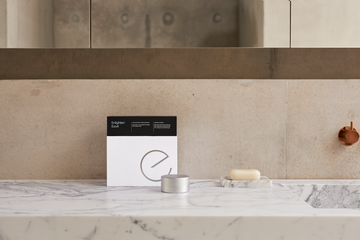Teeth Cleaning or Teeth Whitening?
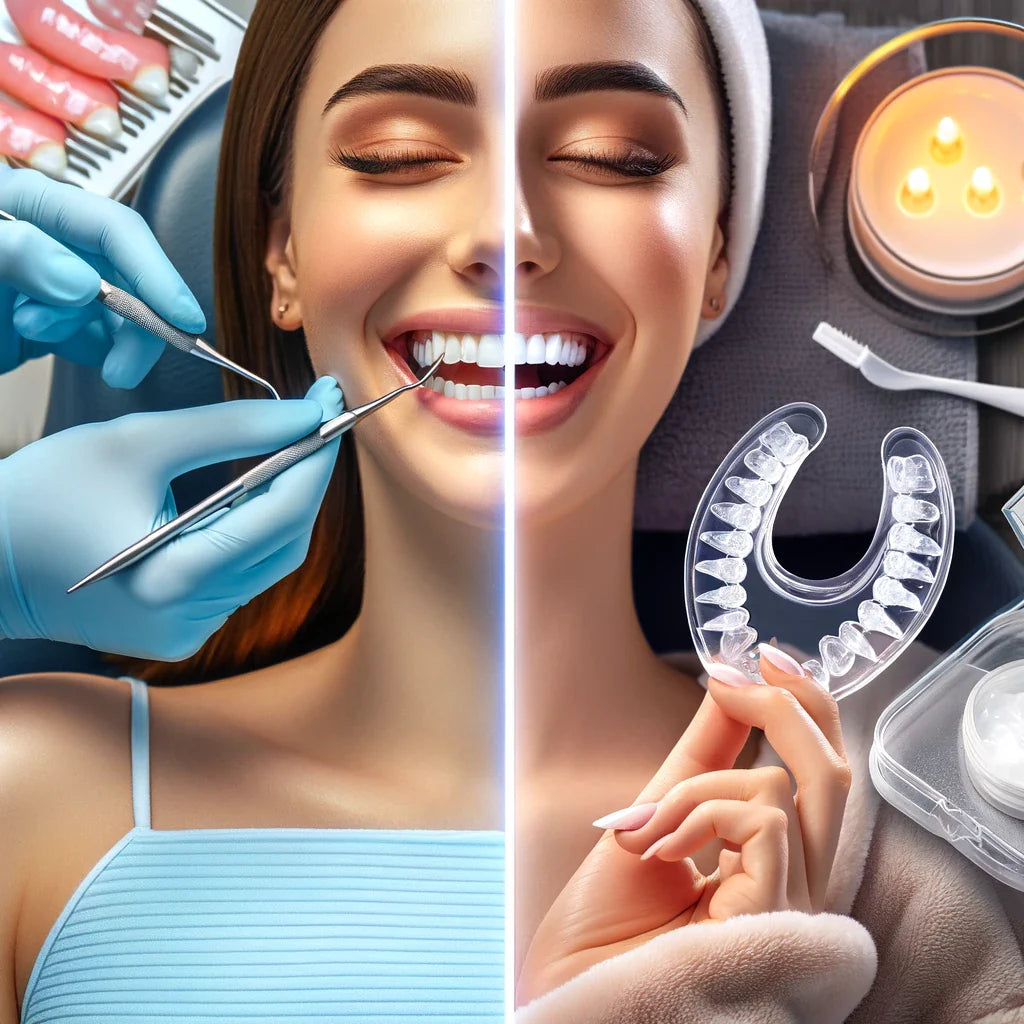
With the rise in non-invasive dentistry, the focus has shifted somewhat from routine dentistry and now more and more patients are coming into practices seeking treatment that can make their smile look more aesthetically pleasing. And surprisingly to some, there are a couple of really simple measures that can be taken to get you the smile you want. Teeth cleaning vs teeth whitening, which is right for you?
The most common question we get asked now is definitely “what can I do to improve the appearance of my teeth?” and there are two particularly simple ways – teeth whitening and teeth cleaning.
What is the difference between a teeth cleaning and teeth whitening?
Teeth cleaning is designed to get rid of the external stains that build up on our teeth from things like dietary or smoking stains. For example, if it’s just external staining that’s built up over the years, then a good clean will easily get rid these stains. But, if the stain is more ingrained into the tooth, then teeth whitening is the best option.
The main difference between teeth whitening and teeth cleaning is, the former cleans the surface of the tooth from extrinsic staining and the latter cleans the extrinsic and intrinsic staining whilst whitening the teeth at the same.
" Teeth whitening does no damage to the enamel "
As we all age, the things we eat and the things we might smoke slowly begin to discolour our teeth and general cleaning might not get rid of that sort of stain. In which case a tooth whitening treatment might be a good option to get that whiteness back into your smile.


Does teeth whitening damage enamel?
It’s a common misconception but in reality, teeth whitening does no damage to enamel and there’s no long-term effects of tooth whitening either. Of course, you’d have to have a dental check-up done first to make sure that everything’s healthy before you start. But once it’s been confirmed that your gums and teeth are healthy then teeth whitening is a simple and straight-forward procedure to go through.
It generally starts with some in practice work which then leads to some overnight whitening at home for two weeks. And that gets rid of not only the external stains on the teeth but also changes the colour of the teeth back to the way they were when you were younger. The way that it works is the carbamide peroxide and hydrogen peroxide gel opens up the tubules within the tooth and gets rid of the internal stains in the tooth whereas toothpaste will only get rid of the stains on the surface of the tooth, it won’t penetrate any deeper. So, for that reason, tooth whitening tends to be seen as the much more effective option.
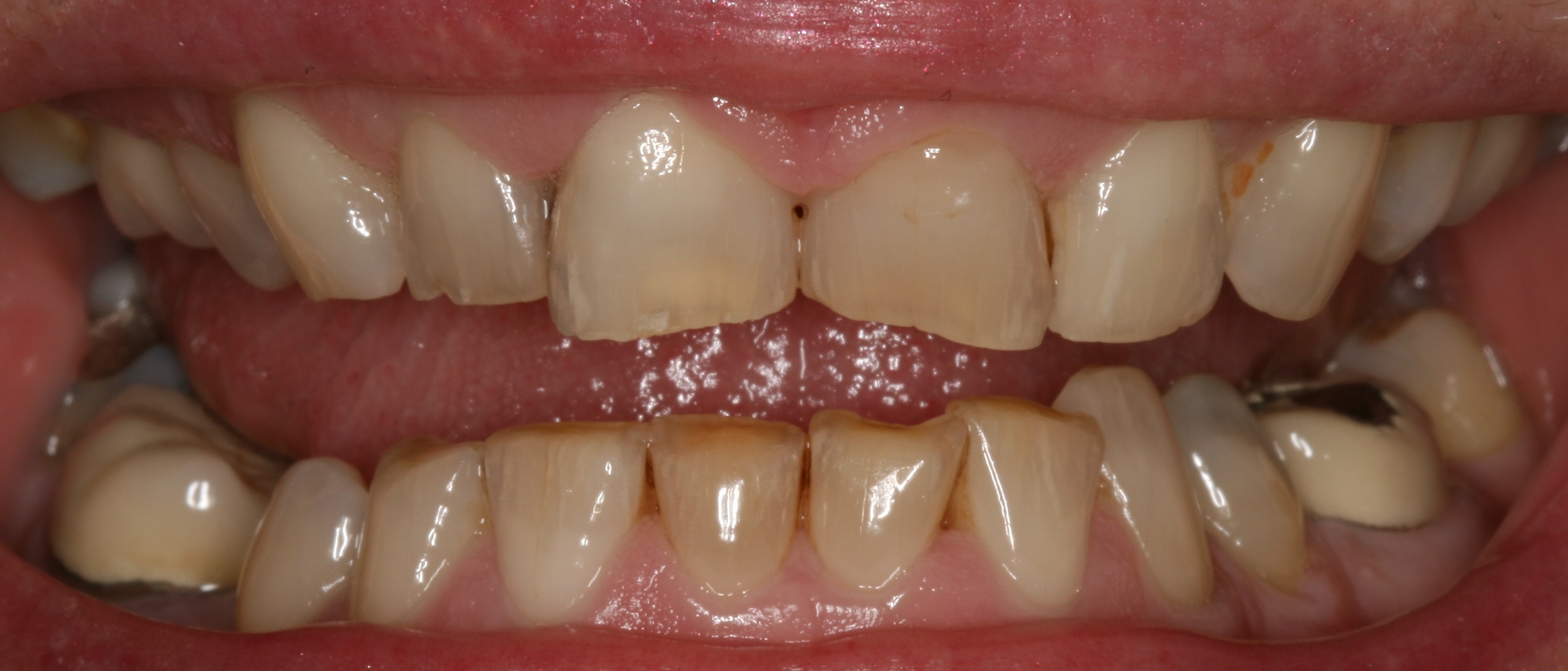
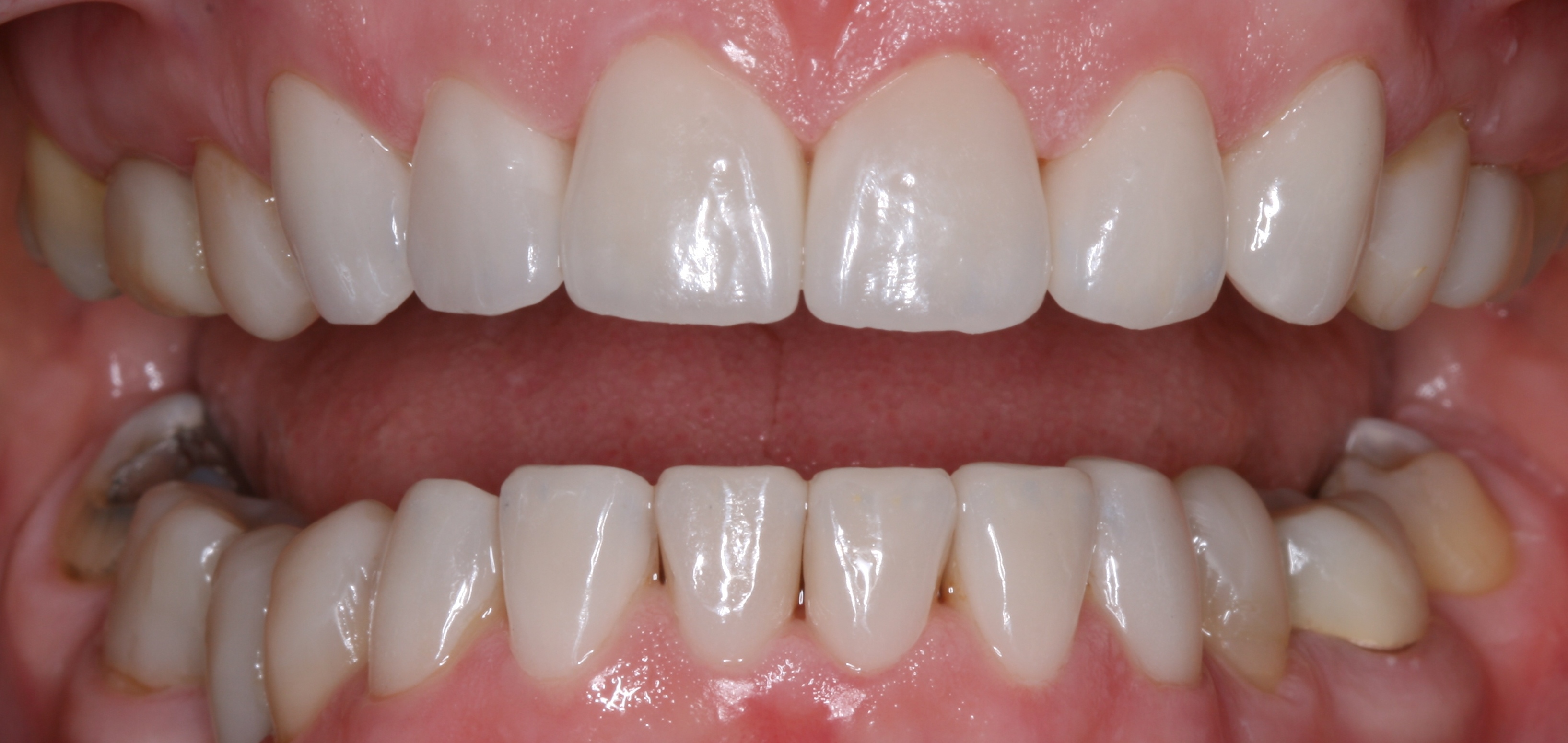
Nicola had been concerned about the uneven appearance of her teeth for many years and felt that they made her look older than she actually was. She decided that she wanted a straighter and whiter smile without looking too false. As Nicola’s teeth were quite worn we used reconstructive techniques over several months to build up her worn back teeth so that we had space for the final porcelain veneers on her front teeth. In this way we provided Nicola with a beautiful natural smile but also one that would provide her with good chewing function and last over time. Total treatment time 9-12 months.
How old do I have to be to whiten my teeth?
Any one of any age can benefit from whitening. It is of course generally adult patients, 18 and over in most cases, that request teeth whitening procedures and there is no age limit on the procedure and teeth whitening begins to immediately improve the whiteness of the teeth.
What if I want my teeth straightened first?
It’s not uncommon for patients to also want to change the position of their teeth when they begin considering teeth whitening. For example, if a patient’s teeth are crooked, crowded or if they had braces when they were younger but now their teeth have started to move back then orthodontic procedures are a good way start to get the smile the way they want it.
This could mean looking at options like fixed braces or Invisalign which is the more discreet choice. If you opt for a fixed brace, then it will be on your teeth at all times whereas Invisalign is removable. Although their mechanics are a little different, they both share the same goal. Both are designed to get your teeth nice and straight by the end.
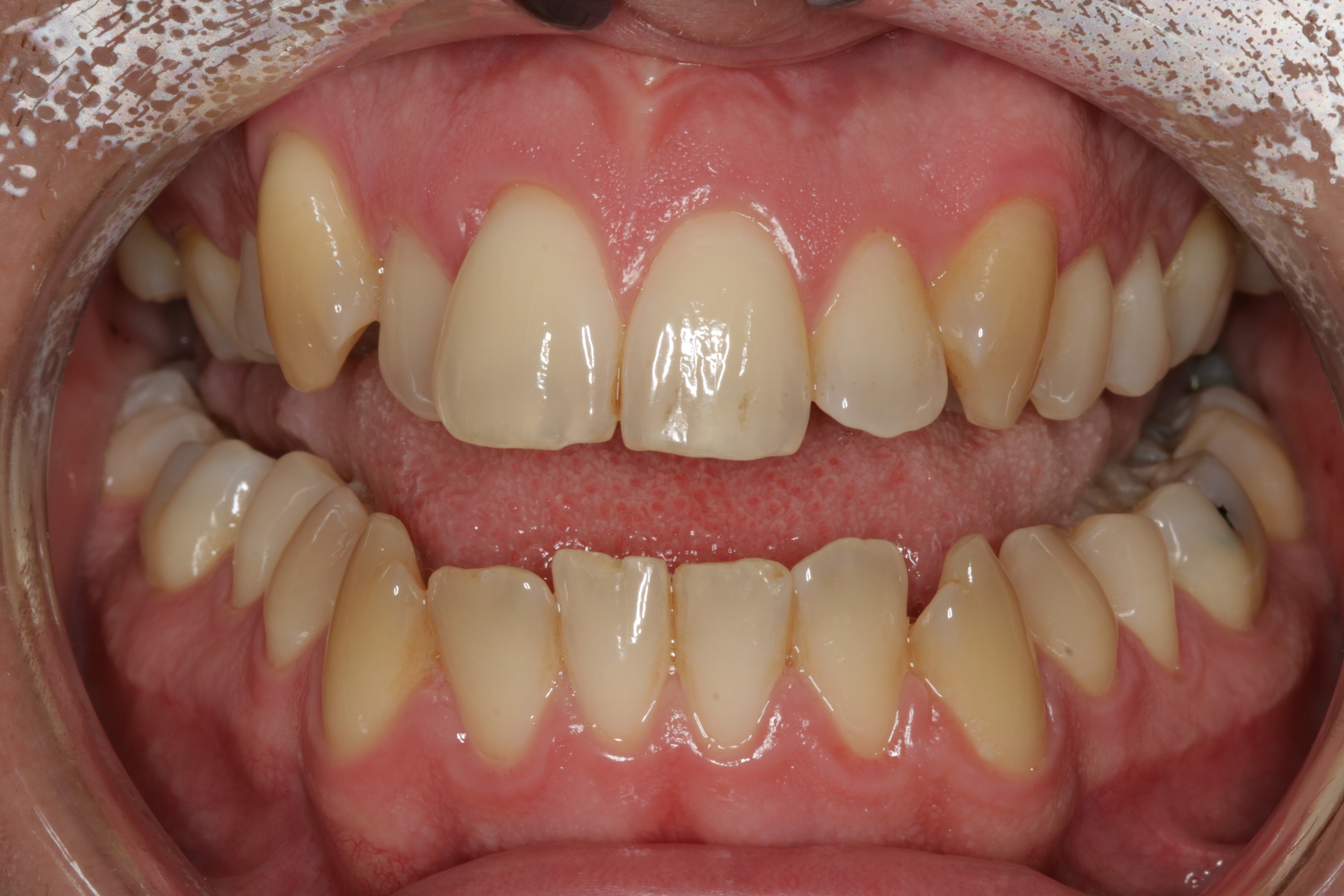
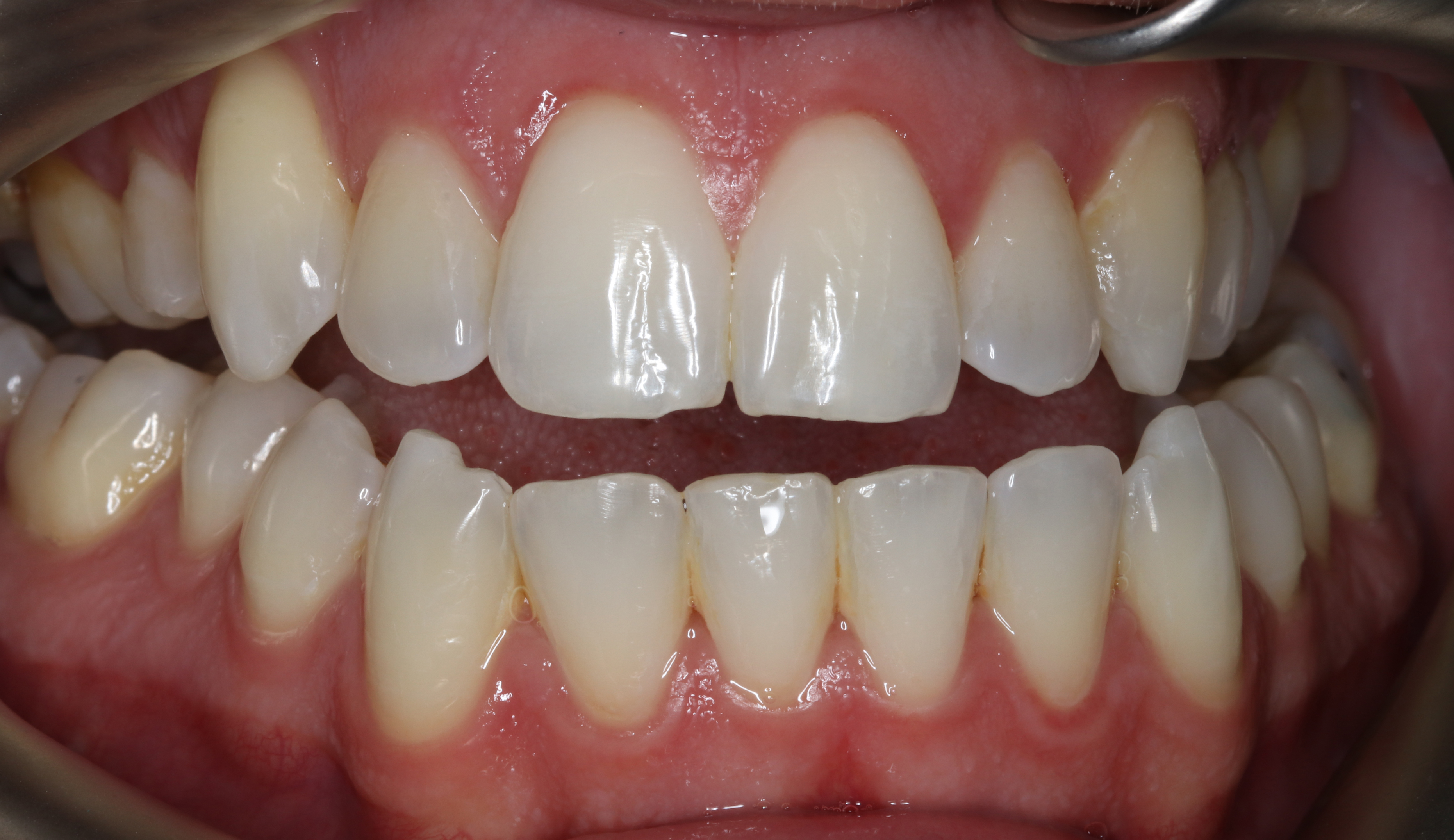
Other options include composite bonding. For example, let’s say a patient didn’t want braces and only required minor changes to achieve their desired outcome then composite bonding would be the most viable solution. And how it works is material is added to the existing tooth to change the shape or the colour of a tooth.
How do I know which method would work best for me?
It really all depends on your own individual circumstance and the methods you are open to taking to get the smile you want. Dental examinations will give you a clear answer on what could work for you. For example, if a patient has a gap in between their teeth then their options to closing that space can range from orthodontic treatments such as braces to composite bonding to veneers or crowns.
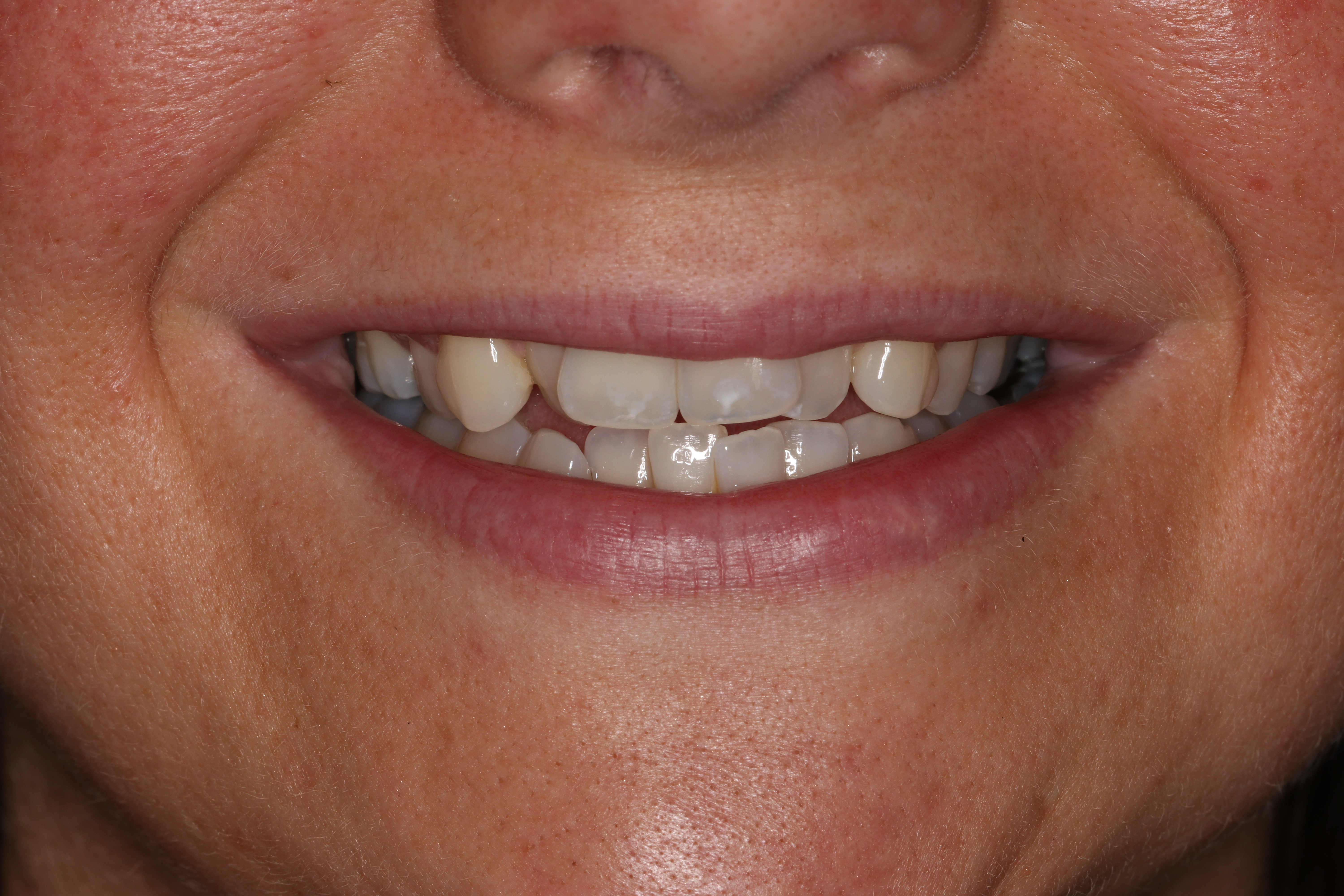
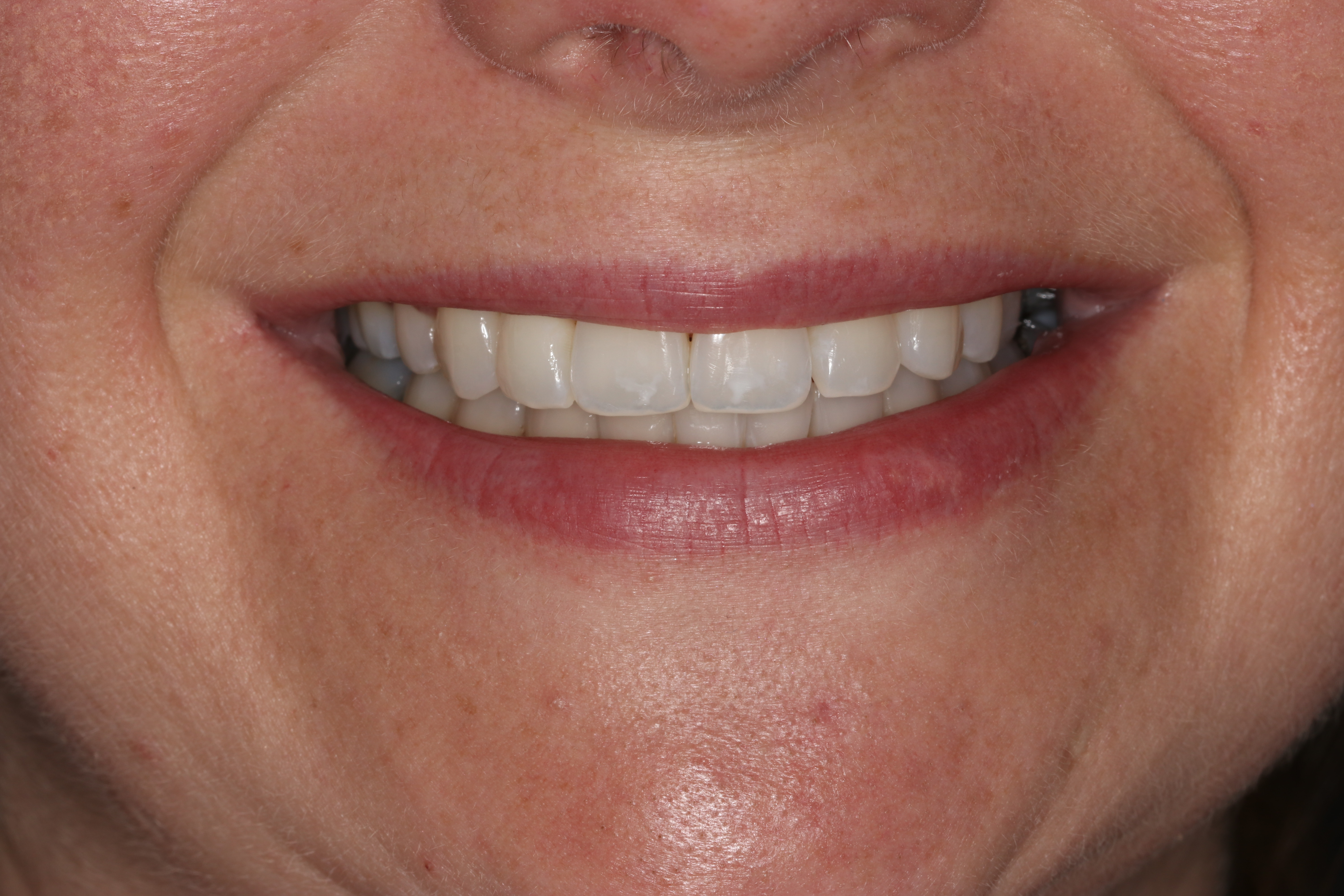
And ultimately the decision that we take is based on the examination of your teeth and of course a consultation with you to decide what works best for you in that particular moment of time. We’ll take into consideration factors such as, the health of your teeth, your age, the costs involved and what you want to achieve.
There are a lot of treatment options available for anyone who wants to improve the look of their teeth. Dentistry has changed a lot in recent years so not all treatments have to be extensive or expensive. It could be a very simple treatment that can be done in a day or if it’s a more advanced case than the treatment might have to be a little more involved. But the bottom line is, we’re there to help patients feel comfortable about their teeth and to help them achieve the results that they want.
› DIG DEEPER ‹
![]()
Learn more about the Enlighten Teeth Whitening System HERE.
And to find an Enlighten whitening expert near you, hit the link below.
FIND A DENTIST

Or if it’s mini smile makeovers you want to dig deeper into, then give it a click right HERE.
_________________________________________________________________________
